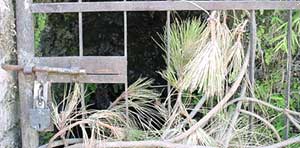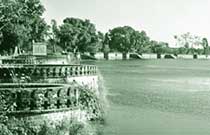| |
A NEW BEGINNING |
|
| The Rain Centre Revelling in rain |
||
CAMPAIGN |
||
| The rights denied Guardians of lakes Rescuing isolated wetlands |
||
IN FOCUS |
||
| Return of the khatris Chandela bunds in bind |
||
INITIATIVE |
||
| Creating
water warriors CSE trains plumbers and masons Meet us ever friday! Reaping the benefits New dawn Roofwater tappers Every drop counts A Chronicle of the sixth Paani Yatra Pride of Doon Tackling water scarcity Turning point |
||
CSE'S LATEST DESIGNS |
||
| The
model projects: Showing the way Eco-conscious business sense |
||
TECHNOLOGY |
||
| Recipe for
greenery Hi-tech filter Better management Can we create rain? |
||
JAL BIRADARI |
||
| Jal
sunwai in Indore |
||
JAL YODHAS |
||
| Shanta
Sheela Nair Vijay Kumar |
||
NEWS FROM CHENNAI |
||
| Temple tank
revived Looking beyond A study planned |
||
NEWS FROM GUJARAT |
||
| Rebuilding
Bhuj |
||
FUNDING AGENCY |
||
| JBICODA
loans |
||
NEWS FROM ABROAD |
||
| Nepal:
Have milk instead.... Bangladesh: Antidote to arsenic |
||

Vol.
4
No.3
June 2002
![]()
When people of Hamirpur and other adjoining districts of Himachal Pradesh started receiving state-sponsored piped water supply, the traditional water harvesting systems were relegated to the background. However, recent water scarcity has once again brought the age-old khatris or water caves into the spotlight. The locals along with the state government are involved in its restoration.
About khatrisKhatris are structures, about 10x12 feet in size and six feet deep carved out in the hard rock mountain. The specially trained masons construct them at a cost of Rs 10,000-20,000 each. These traditional water harvesting structures are found in Hamirpur, Kangra and Mandi districts of Himachal Pradesh.
 |
Iron doors and locks guard the water in khatris |
Interestingly, the khatris are owned by individual as well as by a community. There are government khatris as well, which are maintained by the panchayat. However, "their condition is not good. Both the government and the community are neglecting them ", informs Raghubir Singh, a resident of Lohari village, Hamirpur district..
Restoring khatrisThe reports clearly indicate that the people are not only maintaining the existing khatris but are digging new ones.
The Central Ground water Board (CGWB) has prepared a master plan to tap traditional water resources. Says M Mehta, regional director CGWB, "About Rs 465.50 crore has been earmarked for the revival of springs, ponds and the construction of check damns and subsurface dykes, apart from rooftop rainwater harvesting in Kangra, Bilaspur, Una, Hamirpur, Solan and Sirmour districts."
The Union government has also approved a Rs 829.06 lakh project for developing community-based water harvesting systems in Hamirpur. Department of Agriculture, the implementing agency has received its first installment to begin the works.
Traditional water systems ensure a sustainable water supply, provided they are properly maintained by the community. It seems that both people and state have started to value them, ensuring their return.
Iron doors and locks guard the water in khatris
